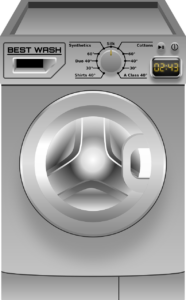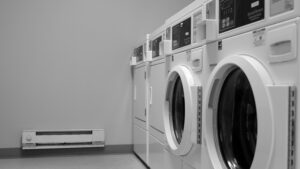Appliances are an essential part of our daily lives, making our tasks easier and more convenient. However, like any other mechanical or electrical device, appliances can sometimes malfunction or break down. When this happens, it is important to have the knowledge and skills to troubleshoot and repair them. Appliance troubleshooting is the process of identifying and fixing problems in appliances, and it plays a crucial role in saving money and preventing accidents.
By troubleshooting appliances on your own, you can save a significant amount of money that would otherwise be spent on professional repairs or replacements. Many common appliance problems can be easily fixed with a little bit of knowledge and the right tools. For example, a leaking dishwasher may just need a simple gasket replacement, which can be done at a fraction of the cost of hiring a repair technician. Additionally, by troubleshooting appliances yourself, you can avoid unnecessary expenses such as service call fees and diagnostic charges.
Furthermore, appliance troubleshooting is important for preventing accidents and ensuring the safety of your home and family. Malfunctioning appliances can pose serious risks such as electrical shocks, fires, and gas leaks. By identifying and fixing problems early on, you can prevent these accidents from happening. For example, if you notice that your oven is not heating properly, it could be due to a faulty heating element. By troubleshooting and replacing the heating element promptly, you can prevent potential fire hazards.
Key Takeaways
- Appliance troubleshooting is important to save money and avoid unnecessary repairs.
- Essential tools for appliance troubleshooting include a multimeter, screwdrivers, pliers, wire strippers, nut drivers, flashlight, and safety gear.
- A multimeter is the most important tool for appliance troubleshooting as it can measure voltage, current, and resistance.
- Screwdrivers are indispensable for disassembling appliances, while pliers are versatile for various repair tasks.
- Wire strippers are a must-have for electrical work, and nut drivers are perfect for tightening and loosening nuts and bolts.
Essential Tools for Appliance Troubleshooting: A Comprehensive Guide
Having the right tools is crucial for successful appliance troubleshooting. Without the proper tools, it can be difficult to diagnose problems accurately and efficiently. Additionally, using the wrong tools can cause damage to appliances or result in injuries. Therefore, it is important to invest in a comprehensive set of tools specifically designed for appliance troubleshooting.
One of the most important tools for appliance troubleshooting is a multimeter. A multimeter is a versatile device that can be used to test electrical components, measure voltage, current, and resistance, and diagnose electrical problems. It is essential for troubleshooting appliances that rely on electricity, such as refrigerators, washing machines, and dryers. With a multimeter, you can easily identify faulty components and determine if they need to be repaired or replaced.
Another essential tool for appliance troubleshooting is a set of screwdrivers. Different types of screwdrivers, such as Phillips and flathead screwdrivers, are needed to disassemble appliances and access internal components. Whether you need to remove a panel, unscrew a control board, or replace a part, having the right screwdriver for the job is crucial. Using the wrong screwdriver can strip screws or damage delicate components.
Pliers are also indispensable tools for appliance troubleshooting. They can be used for various tasks such as bending wires, removing parts, and holding small objects. Needle-nose pliers are particularly useful for reaching into tight spaces and gripping small components. Additionally, adjustable pliers can be used to tighten or loosen nuts and bolts.
Multimeter: The Most Important Tool for Appliance Troubleshooting
A multimeter is arguably the most important tool for appliance troubleshooting. It is a handheld device that combines several functions into one, making it an essential tool for diagnosing electrical problems in appliances.
One of the main uses of a multimeter is testing electrical components. By measuring voltage, current, and resistance, you can determine if a component is functioning properly or if it needs to be replaced. For example, if your refrigerator is not cooling properly, you can use a multimeter to test the compressor motor and determine if it is receiving the correct voltage.
A multimeter can also be used to diagnose electrical problems in appliances. For example, if your dryer is not heating up, you can use a multimeter to test the heating element and thermostat for continuity. If there is no continuity, it indicates that the component is faulty and needs to be replaced.
Furthermore, a multimeter can be used to troubleshoot electrical circuits in appliances. By measuring voltage drops across different points in a circuit, you can identify areas of high resistance or voltage loss. This can help you pinpoint the source of the problem and make the necessary repairs.
Screwdrivers: An Indispensable Tool for Disassembling Appliances
| Appliance | Screwdriver Type | Number of Screws | Difficulty Level |
|---|---|---|---|
| Toaster | Phillips Head | 4 | Easy |
| Microwave | Torx Head | 8 | Medium |
| Refrigerator | Hex Head | 12 | Difficult |
| Dishwasher | Flat Head | 6 | Medium |
Screwdrivers are essential tools for appliance troubleshooting, as they are used to disassemble appliances and access internal components. Different types of screwdrivers are needed for different tasks, and having a comprehensive set of screwdrivers is crucial for successful appliance repair.
One of the most common types of screwdrivers used in appliance troubleshooting is the Phillips screwdriver. It has a cross-shaped tip that fits into Phillips screws, which are commonly found in appliances. Phillips screws are designed to prevent slippage and provide better torque, making them more secure than flathead screws.
Another type of screwdriver commonly used in appliance troubleshooting is the flathead screwdriver. It has a flat, straight tip that fits into slotted screws. Flathead screws are often used in appliances to secure panels and covers. Flathead screwdrivers come in various sizes, so it is important to have a set that includes different sizes to accommodate different screw heads.
In addition to Phillips and flathead screwdrivers, there are also specialized screwdrivers designed for specific tasks. For example, torx screwdrivers have a star-shaped tip that fits into torx screws, which are commonly found in electronics and appliances. Hex screwdrivers have a hexagonal tip that fits into hex screws, which are often used in furniture assembly.
Having the right screwdriver for the job is crucial for preventing damage to screws and components. Using the wrong size or type of screwdriver can strip screws or cause them to become stuck, making it difficult to remove them. Additionally, using a screwdriver that does not fit properly can damage delicate components or scratch the surface of appliances.
Pliers: A Versatile Tool for Various Appliance Repair Tasks
Pliers are versatile tools that are used for various tasks in appliance troubleshooting. They can be used to bend wires, remove parts, hold small objects, and perform other tasks that require a firm grip. Having a set of pliers is essential for successful appliance repair.
One of the most commonly used types of pliers in appliance troubleshooting is needle-nose pliers. They have long, narrow jaws that taper to a point, allowing them to reach into tight spaces and grip small components. Needle-nose pliers are particularly useful for tasks such as removing or installing wires, holding small screws or nuts, and bending wires into shape.
Another type of pliers commonly used in appliance troubleshooting is adjustable pliers, also known as slip-joint pliers. They have an adjustable pivot point that allows the jaws to be opened or closed to accommodate different sizes of nuts and bolts. Adjustable pliers can be used to tighten or loosen nuts and bolts, hold objects securely, and provide extra leverage when needed.
Additionally, there are specialized types of pliers designed for specific tasks in appliance troubleshooting. For example, wire-stripping pliers have a cutting edge and stripping holes that allow you to strip and cut wires easily. Crimping pliers are used to crimp connectors onto wires, providing a secure electrical connection. Long-nose pliers have long, tapered jaws that are useful for reaching into tight spaces and gripping small objects.
Having a set of pliers is essential for successful appliance troubleshooting because they provide a firm grip and allow you to manipulate components with precision. Whether you need to bend wires into shape, remove small screws or nuts, or hold objects securely, having the right pair of pliers for the job can make the task much easier and more efficient.
Wire Strippers: A Must-Have Tool for Electrical Work

Wire strippers are essential tools for appliance troubleshooting, especially when working with electrical components. They are used to strip and cut wires, allowing you to make clean and precise connections.
Wire strippers have a cutting edge and stripping holes of different sizes. The cutting edge is used to cut wires to the desired length, while the stripping holes are used to remove the insulation from the ends of the wires. By removing the insulation, you can expose the bare wire and make electrical connections.
When using wire strippers, it is important to choose the right size stripping hole for the wire you are working with. Using a hole that is too small can damage the wire, while using a hole that is too large can remove too much insulation. By choosing the correct size stripping hole, you can ensure that the wire is stripped cleanly and without any damage.
Wire strippers are particularly useful when troubleshooting appliances that rely on electrical connections, such as refrigerators, washing machines, and dryers. For example, if you need to replace a faulty motor in your washing machine, you will need to strip the wires connected to the motor in order to make the necessary connections.
By having a pair of wire strippers in your toolkit, you can easily strip and cut wires when needed, ensuring clean and precise connections. This will help prevent electrical problems such as short circuits or loose connections, which can cause appliances to malfunction or become unsafe.
Nut Drivers: The Perfect Tool for Tightening and Loosening Nuts and Bolts
Nut drivers are essential tools for appliance troubleshooting, as they are used to tighten and loosen nuts and bolts. They provide a secure grip and allow you to apply torque with precision, making them ideal for tasks that require tightening or loosening fasteners.
Nut drivers have a hollow shaft with a hexagonal opening at one end, which fits over the head of a nut or bolt. The other end of the nut driver has a handle that provides a comfortable grip and allows you to apply torque. Nut drivers come in various sizes to accommodate different sizes of nuts and bolts.
When using a nut driver, it is important to choose the correct size that matches the nut or bolt you are working with. Using a nut driver that is too small or too large can cause damage to the fastener or result in an insecure connection. By choosing the correct size nut driver, you can ensure that the fastener is tightened or loosened properly.
Nut drivers are particularly useful when troubleshooting appliances that have nuts and bolts holding components together, such as refrigerators, ovens, and dishwashers. For example, if you need to replace a faulty heating element in your oven, you will need to loosen the nuts or bolts that secure the element in place.
By having a set of nut drivers in your toolkit, you can easily tighten or loosen nuts and bolts when needed, ensuring secure connections and preventing components from becoming loose over time. This will help prevent problems such as rattling noises or loose connections, which can affect the performance and safety of appliances.
Flashlight: A Handy Tool for Inspecting Appliances in Dark Spaces
A flashlight is a handy tool for appliance troubleshooting, especially when working in dark spaces such as behind appliances or inside cabinets. It provides illumination and allows you to inspect appliances more effectively, making it easier to identify problems and make repairs.
When troubleshooting appliances, it is important to have good visibility in order to see small components, wiring connections, and other details. A flashlight can provide the necessary light to illuminate these areas and make it easier to identify problems. For example, if you are inspecting the control board of your refrigerator for burnt components, a flashlight can help you see clearly and make accurate observations.
In addition to providing illumination, a flashlight can also be used to check for leaks, cracks, or other signs of damage in appliances. By shining the light at different angles, you can reveal hidden problems that may not be visible under normal lighting conditions. For example, if you suspect that your dishwasher is leaking, you can use a flashlight to inspect the bottom of the appliance for water stains or wet areas.
When choosing a flashlight for appliance troubleshooting, it is important to consider factors such as brightness, battery life, and durability. LED flashlights are a popular choice because they are bright, energy-efficient, and long-lasting. Additionally, flashlights with adjustable focus or multiple brightness settings can provide versatility and adaptability for different tasks.
By having a reliable flashlight in your toolkit, you can easily inspect appliances in dark spaces and identify problems more effectively. This will help you make accurate diagnoses and perform repairs with confidence.
Safety Gear: Protecting Yourself While Troubleshooting Appliances
Safety gear is an important aspect of appliance troubleshooting, as it helps protect you from accidents and injuries. When working with appliances, there are various hazards that you may encounter, such as electrical shocks, burns, cuts, and falls. By wearing the appropriate safety gear, you can minimize the risks and ensure your safety.
One of the most important pieces of safety gear for appliance troubleshooting is safety goggles or glasses. They protect your eyes from flying debris, sparks, and chemicals. When working with appliances that involve cutting or drilling, such as removing panels or replacing parts, there is a risk of debris or particles getting into your eyes. Safety goggles or glasses provide a barrier and prevent these hazards from causing eye injuries.
Another essential piece of safety gear is gloves. They protect your hands from cuts, burns, and electrical shocks. When working with appliances that have sharp edges or hot surfaces, such as ovens or refrigerators, wearing gloves can prevent injuries. Additionally, when working with electrical components, gloves can provide insulation and protect you from electrical shocks.
Furthermore, wearing appropriate clothing is important for safety during appliance troubleshooting. Avoid loose-fitting clothing that can get caught in moving parts or exposed wires. Instead, wear fitted clothing that allows you to move freely and comfortably. Additionally, avoid wearing jewelry or accessories that can get tangled in wires or components.
When working with appliances that involve electricity or gas, it is important to turn off the power or shut off the gas supply before starting any repairs. This will help prevent electrical shocks or gas leaks. Additionally, it is important to use insulated tools and avoid touching live wires or components with your bare hands.
By wearing the appropriate safety gear and following safety precautions, you can minimize the risks associated with appliance troubleshooting and ensure your safety. Remember to always prioritize safety and take necessary precautions to protect yourself from accidents and injuries.
Mastering Appliance Troubleshooting with the Right Tools
In conclusion, appliance troubleshooting is an important skill that can save you money and prevent accidents. By having the knowledge and skills to troubleshoot and repair appliances on your own, you can avoid unnecessary expenses and ensure the safety of your home and family.
Having the right tools is crucial for successful appliance troubleshooting. A multimeter is the most important tool for diagnosing electrical problems, while screwdrivers are essential for disassembling appliances. Pliers are versatile tools that can be used for various tasks, such as bending wires and removing parts. Wire strippers are necessary for working with electrical components , as they allow for the precise removal of insulation from wires. Additionally, a flashlight is essential for illuminating hard-to-see areas within appliances. Finally, a voltage tester is crucial for ensuring that power is properly disconnected before working on an appliance. Overall, having these tools readily available will greatly aid in the efficient and accurate troubleshooting of appliances.
If you’re looking for more information on essential tools for appliance troubleshooting, be sure to check out the related article on 911 Appliance’s blog. This comprehensive guide provides valuable insights into the must-have tools every homeowner or technician should have in their arsenal when it comes to diagnosing and fixing appliance issues. From multimeters to voltage testers, this article covers it all. Don’t miss out on this informative resource! Read more
What Essential Tools Do I Need to Troubleshoot Knob and Control Panel Issues?
When troubleshooting knob and control panel issues, essential tools include a multimeter for testing electrical components, a screwdriver set for disassembling the panel, and a voltage detector for ensuring safety. Additionally, having access to the appliance’s manual to understand the wiring diagram is crucial for identifying and resolving issues.



